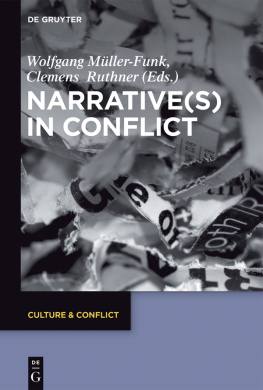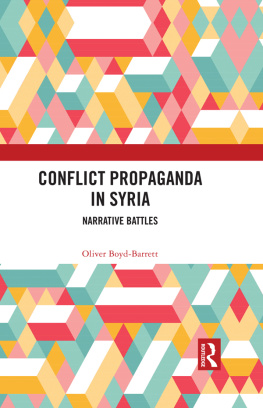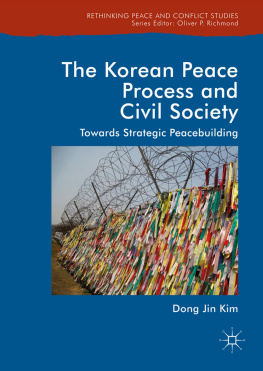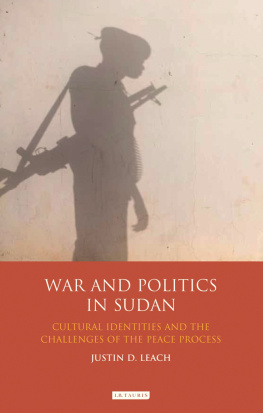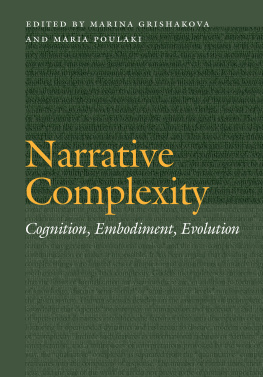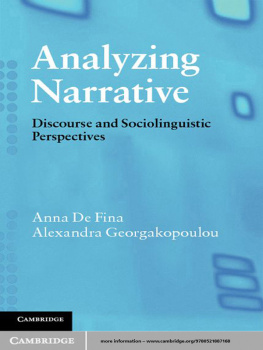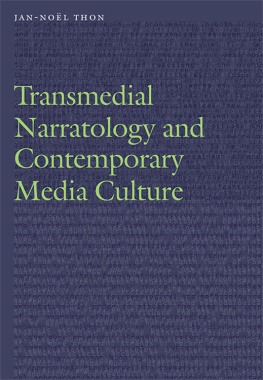Table of Contents
Guide

Narrative(s) in Conflict
Culture & Conflict

Edited by
Isabel Capeloa Gil and Catherine Nesci
Editorial Board
Arjun Appadurai Claudia Benthien Elisabeth Bronfen Joyce Goggin Lawrence Grossberg Andreas Huyssen Ansgar Nnning Naomi Segal Mrcio Seligmann-Silva Antnio Sousa Ribeiro Roberto Vecchi Samuel Weber Liliane Weissberg Christoph Wulf
Volume 10

ISBN 978-3-11-055564-6
e-ISBN (PDF) 978-3-11-055685-8
e-ISBN (EPUB) 978-3-11-055590-5
ISSN 2194-7104
Library of Congress Cataloging-in-Publication Data
A CIP catalog record for this book has been applied for at the Library of Congress.
Bibliographic information published by the Deutsche Nationalbibliothek
The Deutsche Nationalbibliothek lists this publication in the Deutsche Nationalbibliografie; detailed bibliographic data are available on the Internet at http://dnb.dnb.de.
2017 Walter de Gruyter GmbH, Berlin/Boston
Cover image: Mark Winfrey/Dreamstime
www.degruyter.com
Preface by the Editors
Narrative(s) in Conflict presents the results of an international workshop, held with prominent senior scholars and promising junior researchers at Trinity College Dublin in May 2013, to a wider audience. The project was a spin-off of sorts of the cross-disciplinary and comparative research network Broken Narratives , organized by the Faculty of Philology and Cultural Studies at the University of Vienna, and situated within the research strand Identities in Transformation of the Trinity Long Room Hub Arts and Humanities Research Institute, housed at Trinity College Dublin; also our contacts with the Graduate Centre for the Study of Culture (GCSC) at the University of Giessen, Germany, proved to be very inspiring.
What has brought this informal network together, is its credo that narrative theory and narratological tools should be regarded as an integral part of cultural analysis (cf. Bal 2009). By choosing exemplary case studies, our workshop tried to analyze the relation between representation and conflict, i.e. between narrative constructions, social/historical processes and cultural agon . In order to address this research question properly, it is crucial to state that narratives do not simply and passively mirror conflicts as the conventional realism fallacy suggests. They rather provide a symbolic matrix to make sense of a conflict in a way that is accepted by a narrative community; also, they have even a generative and performative dimension.
Generally speaking, cultures can be seen as a reservoir of different types or templates of narratives that are available for the purpose of formatting and making events (cf. White 1973; Rowner 2015; Ruthner 2016). However, narratives are only partly referential texts, but rather entail interpretation(s) by choosing a certain plot. From this point of view, one may revert the traditional idea that narratives are simply the effect of dramatic events. It is also true that, under certain circumstances, events gain their momentum only through their emplotment by pre-existing templates (White 1987).
Storytelling can thus be approached as a central element and technique in and of culture (cf. e. g. Mller-Funk 2008, 2012). Following the tradition of Anglophone cultural studies and Antonio Gramsci (1978), culture is not an innocuous meta-phenomenon beyond power, but the latter is inscribed in the former and shapes it (see Foucault 1980). With regard to our topic, this also means it is a question of power, which narratives are present in a society and which are not. Or, which sorts and formats of narrative are dominant in the uses of the past in a culture, particularly when it comes to cultural memory formation (cf. Erll & Nnning 2008).
The agonistic model used in our volume implies that culture/s are a battleground for meaning and significance (Fiske 1990: 23), between various actors and stakeholders, within and between narrative communities such as social groups or national collectives, between centres and peripheries, etc. Concurrently, conflict in itself is one of the most important plot devices not only in fiction and drama (Abbott 2008: 55), but social, political, economic, epistemological and other conflicts also inform the polysemy of all cultural texts and vice versa. They run through the narratives as lines of rupture or ambiguity at a textual level (cf. Nnning & Nnning 2016); on the other hand, they can be approached as competing stories at a cultural level as well.
Accordingly, we have placed the case studies of our volume between literary criticism, historiography, and cultural theory, involving disciplines such as cultural sociology, or film and media studies as well. The book thus applies narrative analysis not only to literature and its interpretation, but it goes further than that, pointing at other important functions of narrative production for culture; for instance, in the construction of collective identities and memory. The case studies collected here try to include different countries, cultures, cultural media and genres. In terms of thematic scope and historical focus, they range from early modern times to (German and Austrian) Modernism and international Postmodernism, from the Ottoman Empire and the cultural reactions to it in the South Slavic and Hungarian literatures to post-war trauma, be it in France, Ireland, Japan and the US after World War II, in Bosnia-Herzegovina after the Yugoslav Succession Wars of the 1990s, or in the aftermath of 9/11. Thus, this volume shows narrative activity to refer to Ansgar and Vera Nnnings central essay as a symbolic machinery of world-, identity- and conflict-making, in which not only antagonism, but also caesura plays an important role.
The latter was also central to the Viennese research project Broken Narratives that served as an incentive of sorts for our project as well. The German word Bruch namely entails at least two aspects, which can be translated into English as break , and as rupture , respectively. There is a moment of destruction (broken glass) linked with a temporal aspect: a sudden and often unexpected change, but also an interruption, and finally a halt to a continuous process.
At first glance, it might seem as if narration were the simple opposite of rupture. But narrative and rupture are not in a binary opposition; there is a strong interdependence instead. Narrative is always something that constitutes continuity by connecting disparate elements. Narrative, however, is broken, too, when the rupture is visible as a trace. Thus, to some extent, traditional narratives work in the tricky Hegelian way of aufheben : they pick up (and preserve), and they suspend at the same time.
Broken narratives have thus a triple meaning. On a semantic level, they refer to a real rupture in history or in a certain historical discourse; they relate to a sudden event, to a dramatic turning point. The second aspect of narrative is an interpretative or even performative one. Because narratives are never a simple reproduction of what has happened, they always include an interpretation of the events they refer to (and create). This, however, entails the (performative) worldmaking aspect of narratives, which plays a key role in Ansgar and Vera Nnnings essay in this volume. On a structural level, finally, modernist narratives are broken in themselves since they break with the traditional way of storytelling. From James Joyces Ulysses (1922) to Pter Ndass Parallel Stories (2005), there is a programmatic distrust vis--vis homogeneity, closure, and linearity.

